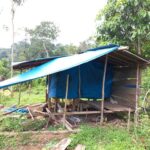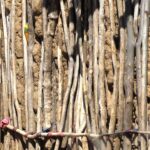Members of the Khoi-san (Bushmen) tribe named Ju//hoansi are also called !Kung. Both the signs / and ! denote click sounds. The tribe is about 30,000 people spread over Namibia, Botswana, and southern Angola, with a central area at the Botswanan-Namibian border area around Tsumkwe. During foraging or hunting expeditions, they use leaf huts as temporary shelters, providing shade.
Why are temporary leaf huts necessary?
During wild food gathering and hunting in September and Oktober, when the weather is scorching hot and leaves have only evolved very sparingly, they build temporary grass or leave shelters for protection against the scorching sun and spend the time from around 11 a.m. to 4 p.m. under this protection. These shelters have the same design as those already used for ages.
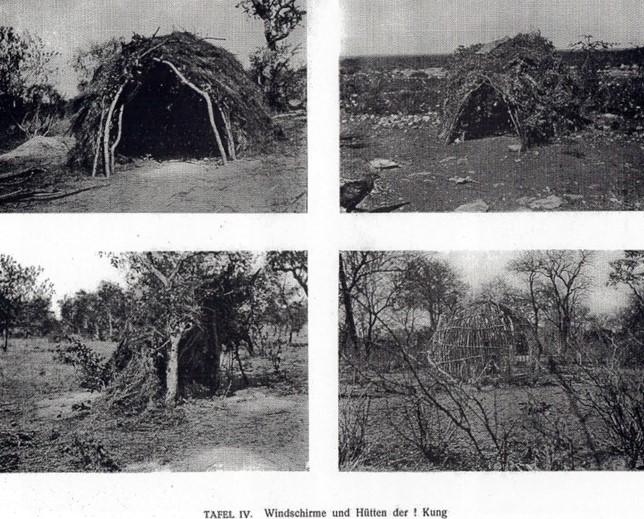
The Curator of the Austrian Natural History Museum in Vienna took and published photos of such shelters on his expedition to !Kung Bushmen in 1927.
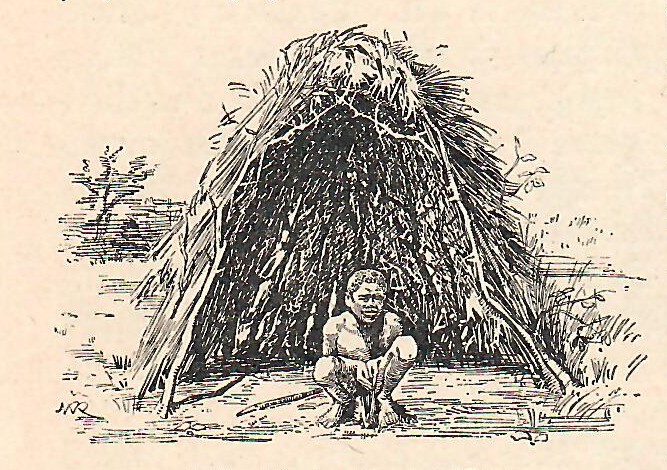
Building these shelters is technically not difficult, but it is very strenuous due to the environmental circumstances. The location of the intended site should never be where cattle, donkeys, goats, or antelopes regularly rest in more significant numbers, as there will be a concentration of ticks and notable sand tampans, which have to be avoided. On a side note, approaching domestic animals resting under the shade in the African bush is not a good idea, as many of them will defend their place and are not yet infected by peaceful behavior.
Building the leaf huts

After a suitable spot is found with enough well-leaved, non-spiny poles and enough grass or green leaves around, the place is cleared of plant material until only sand and small matters remain.

Next, opposite each other and about three meters apart, two holes will be dug into the sand, each about 40 cm deep. They hold the two entrance poles, which are the main poles of the whole contraption. After that, labor is divided. Two people will dig holes in a semicircle behind the entrance poles, each about 50 cm apart. Two other band members will cut suitable poles and bring them to the site. Digging these holes reminds me of the Hadza grass shelters in Tanzania. There, the two mothers-in-law of a new couple will also dig the holes for the couple’s first hut together.
Covering is done either with dry grass from bottom to top, or the leaves on the poles are left in place and interwoven with other twigs of neighboring poles. Between the ground and earnest leave- or grass covering, a space of about 50 cm is left open to allow air to flow across the floor.
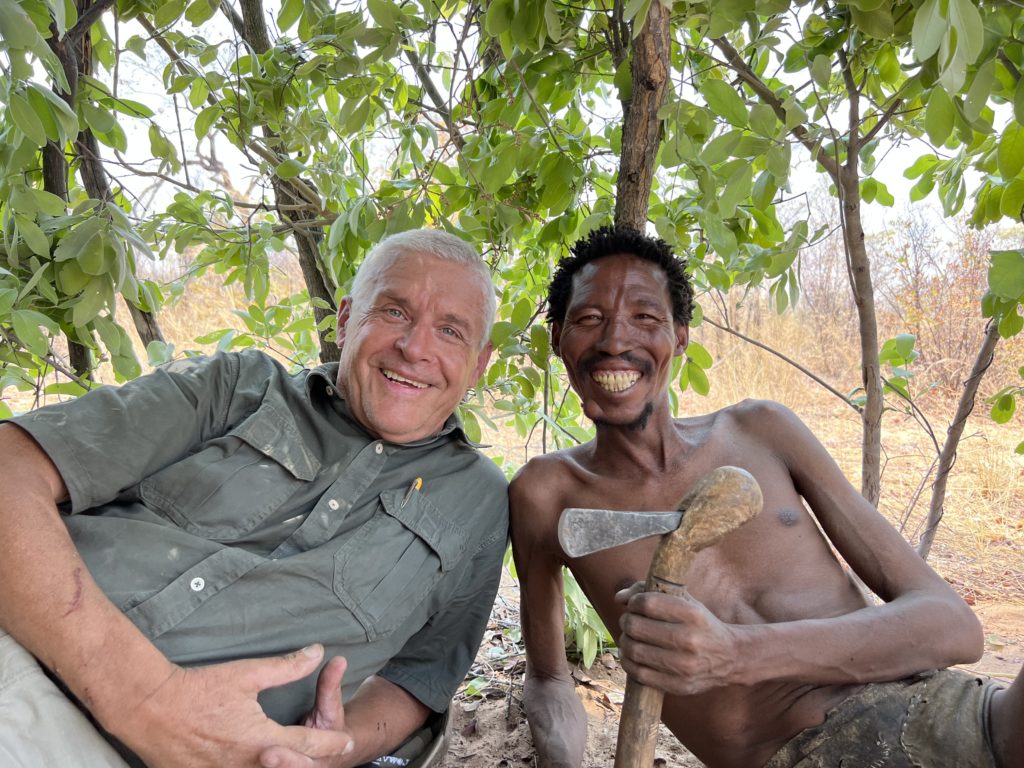
In our case, the whole construction took about half an hour, but after a 6 km walk over rough, pathless, thorny country and working under midday sun, energy was fast vanishing. The shade, however, was dense in the shelter, and airflow was cooling the body somewhat from the 38 degC surrounding temperature in the shade. The axe, which our interpreter holds in hand, is similar to the axes of the Hadza people.
Lessons learned from building Khoi-san leaf huts:
- Due to the relentless heat in September/October, artificial shade must be constructed in the wild of Namibia’s northern savannah biomes.
- It is highly advised to stay within this shelter from 11 a.m. to 4 p.m.; otherwise, heatstroke can quickly occur.
- Khoi-san people developed a fast-to-errect and efficient temporary shelter design long ago, which is still in use today.
.



